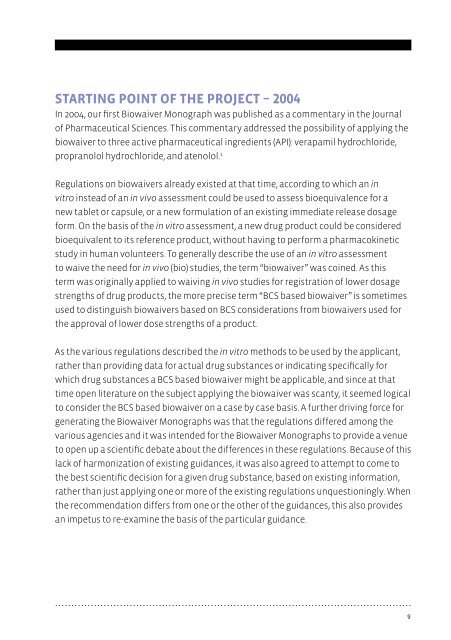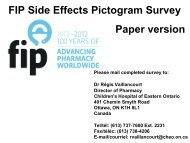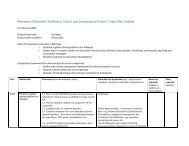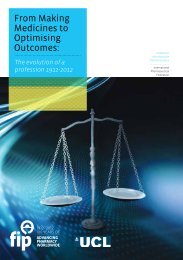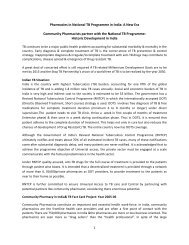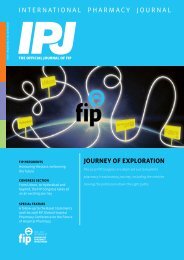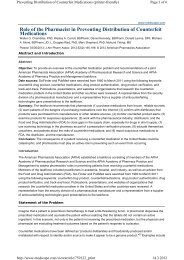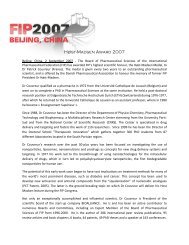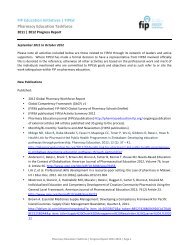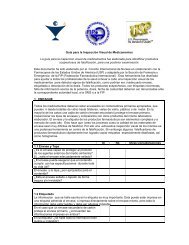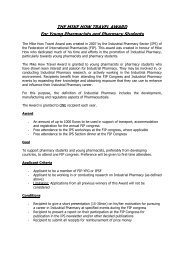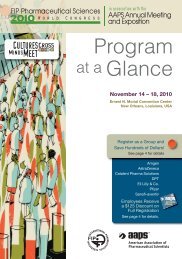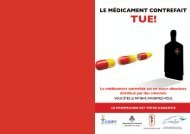THe BIOWaIVer MONOGraPHS - FIP
THe BIOWaIVer MONOGraPHS - FIP
THe BIOWaIVer MONOGraPHS - FIP
Create successful ePaper yourself
Turn your PDF publications into a flip-book with our unique Google optimized e-Paper software.
STarTING POINT Of <strong>THe</strong> PrOJecT – 2004<br />
In 2004, our first Biowaiver Monograph was published as a commentary in the Journal<br />
of Pharmaceutical Sciences. This commentary addressed the possibility of applying the<br />
biowaiver to three active pharmaceutical ingredients (API): verapamil hydrochloride,<br />
propranolol hydrochloride, and atenolol. 1<br />
Regulations on biowaivers already existed at that time, according to which an in<br />
vitro instead of an in vivo assessment could be used to assess bioequivalence for a<br />
new tablet or capsule, or a new formulation of an existing immediate release dosage<br />
form. On the basis of the in vitro assessment, a new drug product could be considered<br />
bioequivalent to its reference product, without having to perform a pharmacokinetic<br />
study in human volunteers. To generally describe the use of an in vitro assessment<br />
to waive the need for in vivo (bio) studies, the term “biowaiver” was coined. As this<br />
term was originally applied to waiving in vivo studies for registration of lower dosage<br />
strengths of drug products, the more precise term “BCS based biowaiver” is sometimes<br />
used to distinguish biowaivers based on BCS considerations from biowaivers used for<br />
the approval of lower dose strengths of a product.<br />
As the various regulations described the in vitro methods to be used by the applicant,<br />
rather than providing data for actual drug substances or indicating specifically for<br />
which drug substances a BCS based biowaiver might be applicable, and since at that<br />
time open literature on the subject applying the biowaiver was scanty, it seemed logical<br />
to consider the BCS based biowaiver on a case by case basis. A further driving force for<br />
generating the Biowaiver Monographs was that the regulations differed among the<br />
various agencies and it was intended for the Biowaiver Monographs to provide a venue<br />
to open up a scientific debate about the differences in these regulations. Because of this<br />
lack of harmonization of existing guidances, it was also agreed to attempt to come to<br />
the best scientific decision for a given drug substance, based on existing information,<br />
rather than just applying one or more of the existing regulations unquestioningly. When<br />
the recommendation differs from one or the other of the guidances, this also provides<br />
an impetus to re-examine the basis of the particular guidance.<br />
9


